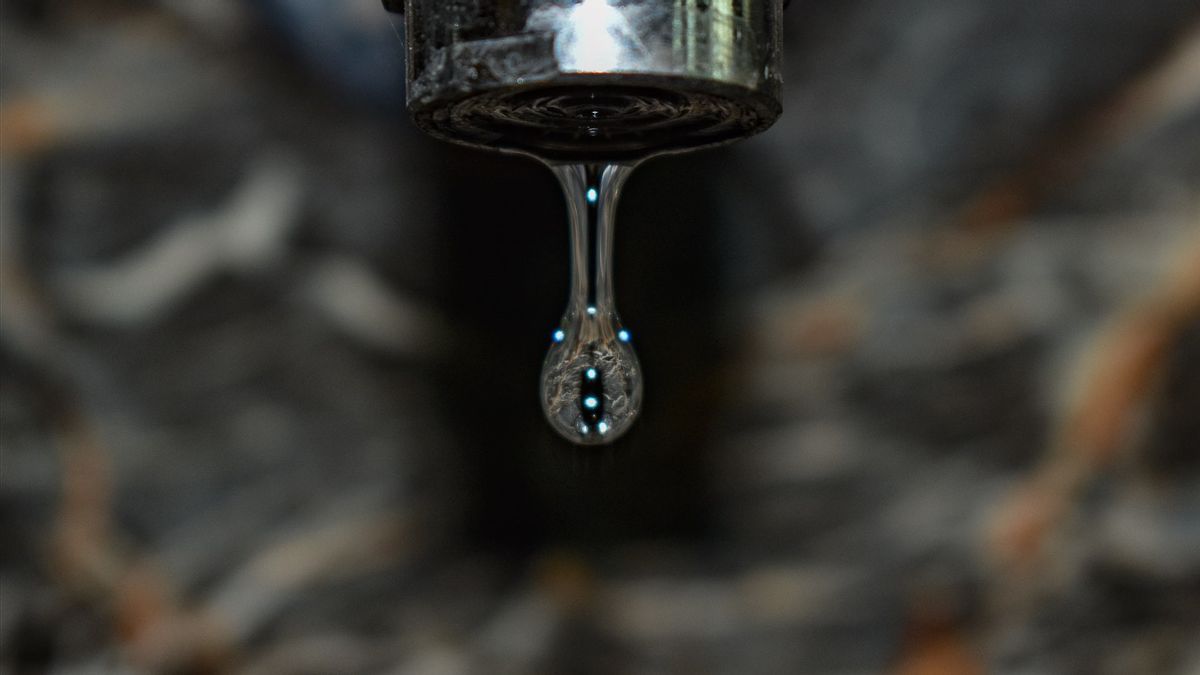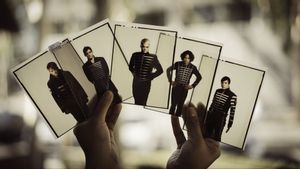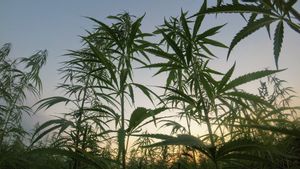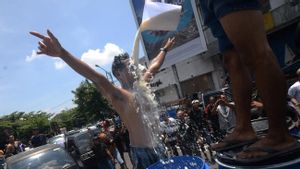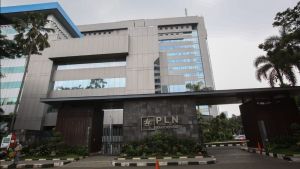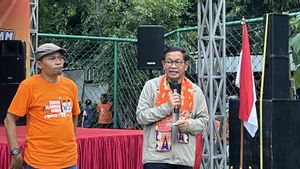JAKARTA - Jakarta and water. Water may submerge Jakarta by 2050. The utilization of water sources from drilled wells is a problem that must be resolved immediately.
In October 2019, the journal Nature Communications released the results of a study predicting Jakarta to sink in 2050. A researcher from the Indonesian Institute of Sciences (LIPI), Intan Suci Nurhati explained a number of things that could have caused Jakarta to sink. One of them is community behavior, such as extracting ground water using bore wells.
"As for Jakarta itself, it is like (the impact) due to climate change to North Jakarta, but because there is groundwater extraction (the impact) to Monas. For example like that, this is just a comparison," said Intan, as quoted by Kompas.com.
Intan, who is also a member of the UN's Intergovernmental Panel on Climate Change, said that in Jakarta, land subsidence due to people's behavior plays a role more than climate change itself. Therefore, in addition to exploring the impacts of climate change, the authorities must also take patent solutions to stop destructive behavior in society, including the extraction of groundwater.
Those two things, said Intan, will greatly influence what solutions should be taken. "If we talk about a city like Jakarta, if we want to save this city from rising sea levels and we are not careful to see which factor is more dominant, we are afraid that our focus will not be right," said Intan.
"For example, if in Jakarta it reduces the use of groundwater, the effect will be very helpful (reducing the impact of a greater sea-level rise). Now that's one way we can do it locally," she added.
Suction water with a borehole
To find out how groundwater is used and access to clean water for Jakarta residents, we tried to contact the DKI Jakarta Water Resources Agency, either the Head of the Office, Yusmada Faizal, or the Secretary, Duki Gardesi. Both did not respond to VOI. Short messages not answered. The phone was not picked up, even though our WhatsApp message to Yusmada Faizal had two blue ticks.
Dudi Gardesi, in a Republika article several months ago, admitted that there is still a lot of groundwater use in Jakarta. The SDA office also claims that it is trying to move clean water sources for residents from drilled wells to use piped water. Even so, at that time Dudi said that he did not know in more detail because previously the problem of clean water in Jakarta was handled by the DKI Jakarta Industry and Energy Agency.
"Yes, a lot of people still use groundwater, but what is clear is that we will strive to reduce the use of groundwater and the community to use piped water," he said at that time.
Clean piped water for Jakarta residents
In July 2020, the DKI Jakarta Provincial Government released data on customers of Jakarta PAM's clean water. According to these data, water cubication from PAM has grown by two percent annually since 2013. Clean water in Jakarta is supplied by PT. PAM Jaya, which partners with PT. Palyja - handling water supply for the western region - and PT. Aetra for the eastern region.
Quoted from the Jakarta.go.id website, in 2019, the number of clean water customers was recorded at 878,268 customers, with the total production and cubication of water sold of 631.96 million m3 and 362.63 million m3, respectively. This means that each PAM customer consumed an average of 719.6 m3 during 2019.
This two percent growth has an impact on increasing the value of the rupiah obtained by PAM every year, except for 2014 and 2019. As of 2018, the value of the rupiah obtained by PAM was Rp. 2.74 trillion. Meanwhile, in 2019, PAM received Rp. 2.43 trillion, a decrease of about 11 percent. This decline was the largest during that period.
Based on data from PAM Jaya DKI Jakarta, non-commercial groups are the largest customers with 743,555 customers or about 85 percent of the total clean water customers in DKI Jakarta. The next largest number of clean water customers is the commercial group with a total of 123,432 customers.
In the non-commercial group, households are the largest number of clean water customers, namely 739,944 or 99.5 percent of the total customers of the non-commercial group. The highest volume of water distributed by PAM occurred in 2019, namely to residential customers. This is in accordance with the number of clean water customers in the household group, which is also the largest in DKI Jakarta.
The volume of water distributed by PAM to residential houses is up to 16 million m3 or about 53 percent of the total volume of water distributed in DKI Jakarta. This resulted in the highest amount of rupiah obtained by PAM from the group of residential houses, amounting to Rp. 0.95 trillion or 39 percent.
Although the number of government agency customers is more than 66 percent of the total hotel/tourist attraction customers. However, the volume of water distributed to the hotel/tourism object customer group is more, namely three million m3. So that the rupiah value obtained is also much more, namely as much as Rp. 411.022 billion.
In an article published in Kompas in 2019, PAM Jaya President Director Bambang Hermowo mentioned 2030 as a target where all Jakarta residents will have access to clean piped water. PAM is working with the DKI Jakarta Natural Resources Office to build a water supply system at various points.
*Read other information about WATER or read other interesting writings from Yudhistira Mahabharata.
Other SOLID NEWS
SEE ALSO:
The English, Chinese, Japanese, Arabic, and French versions are automatically generated by the AI. So there may still be inaccuracies in translating, please always see Indonesian as our main language. (system supported by DigitalSiber.id)
